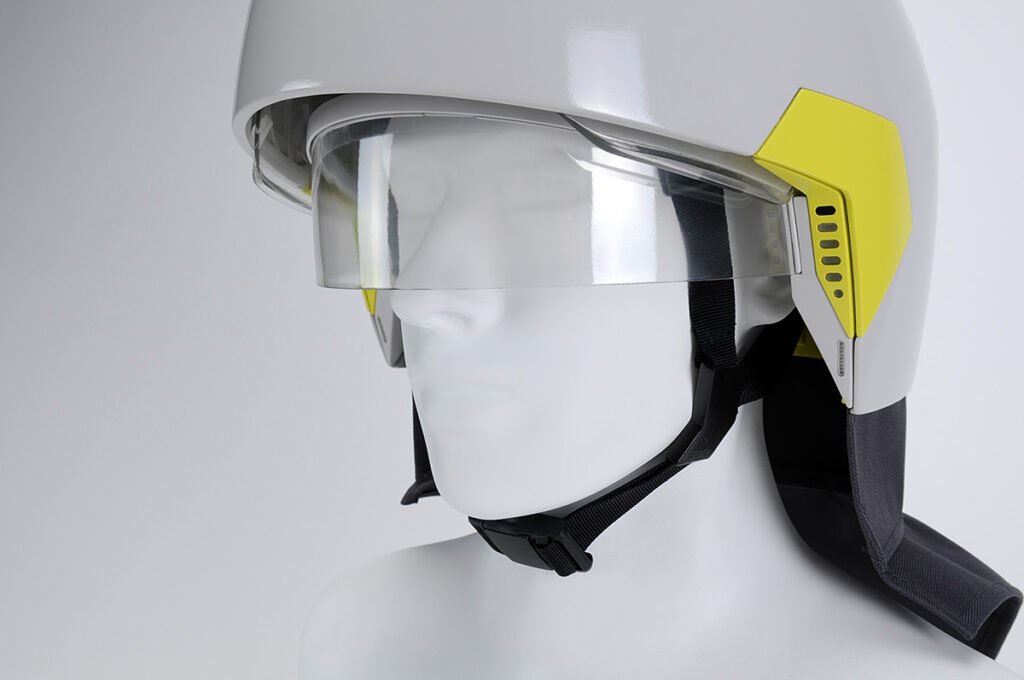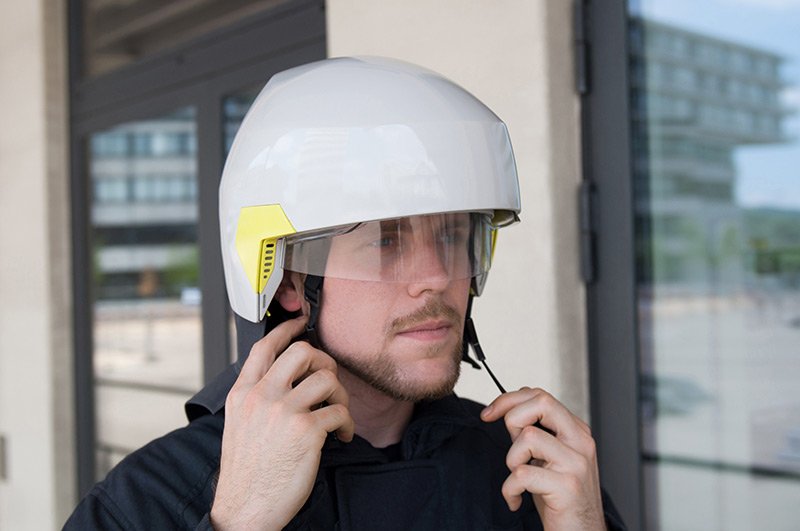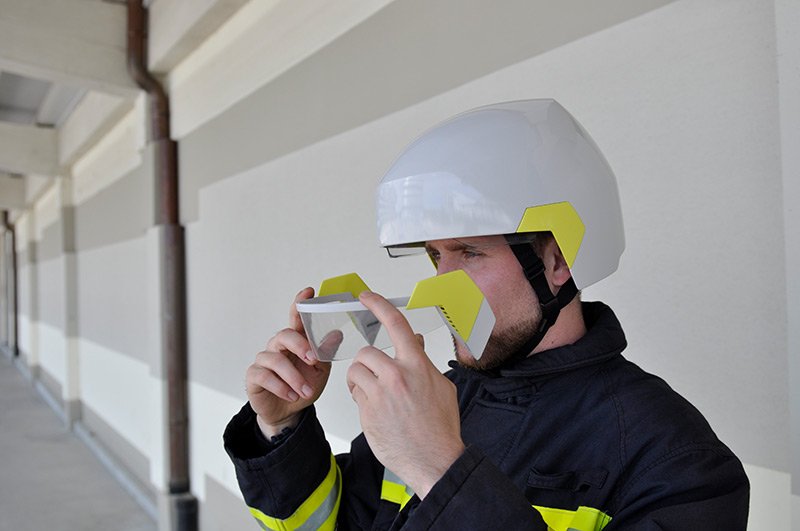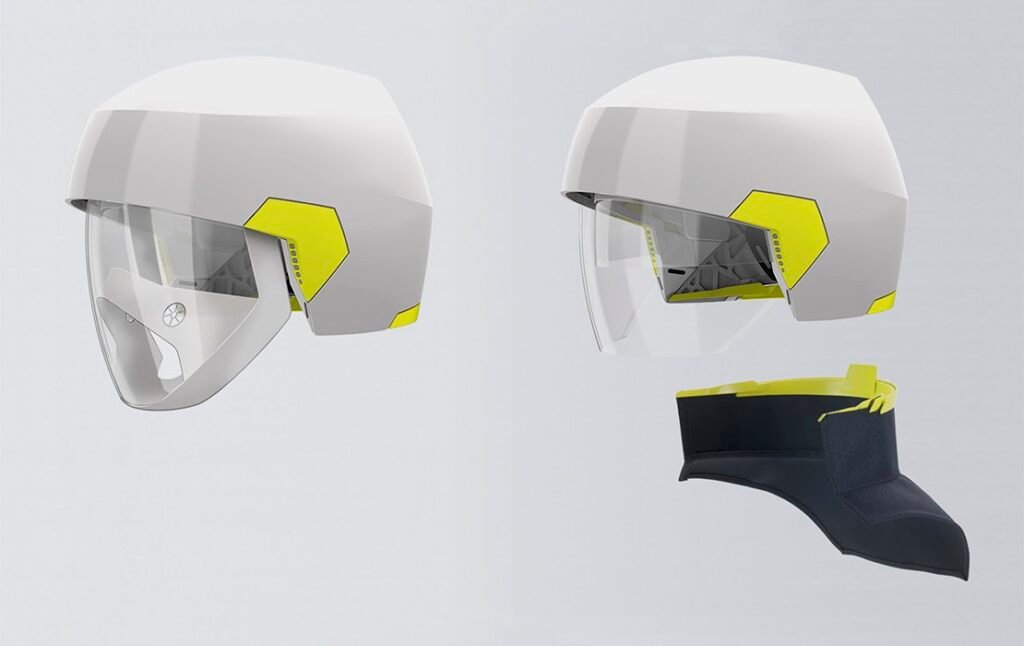senco – helmet




“Bad sight and communication increase the danger for firefighters and the people who are seeking help. Thanks to augmented reality, firefighters are able to work faster, more safely, and efficiently!”
About the project
senco – A modular fire fighter helmet concept to optimize protection, sight and communication.
How does it work?
The basic module, which consists of an integrated radio and a white LED spotlight, can be upgraded with an augmented reality respirator mask or augmented reality glasses. Sensors, processor, energy source, and display come as a full package that is reversibly connected to the helmet with a plug-in. Digital data, like thermal images, mapping, and other important information, can be monitored through the see-through display, enabling hands-free handling and an optimal overview of the situation. The minimalistic interface design of the augmented reality can be easily integrated into the field of view without distracting its user. Navigation of the interface happens through eye-tracking. The head of operations can use a tablet to send building plans, car plans, hazardous goods information, or other digital data to the augmented reality systems. The helmet is considered personal protective equipment, while the additional modules are common property of the fire department.
Design process
Extensive research and analysis of operational fields, operational sequences, requirements, as well as existing helmets and equipment from different firefighter companies were conducted beforehand. The demands and needs of this field became apparent to us after in-depth conversations with various individuals from the industry – firefighters, heads of operations, tutors, retailers, and developers. This knowledge enabled us to develop a well-thought-out concept that consisted of alternating processes of discussing, drawing, crafting, CAD modeling, and testing. The concept was greatly improved by scrutinizing every detail of the operational field. The design was not just a result of its functions; it was crucial for us to treat both with the same significance, resulting in new solutions. Along with the hardware design of the helmet, we also examined the requirements for the interface design. We evaluated different information and data relevant to firefighters and created an information hierarchy. The concept is presented as a design model, while the augmented reality is visualized through graphics.
Helmet
The firefighter helmet combines aerodynamic design with comfort features like adjustable padding for prolonged wear. Bright colors enhance visibility in low-light conditions, ensuring safety and quick identification in the field.
Suspension frame
The suspension frame inside the helmet is designed as light as possible. for wearing comfort it is equipped with a soft and light fleece padding.
Augmented reality glasses and mask
The AR glasses and the AR respirator mask are adaptable. all the technical equipment and sensors are packed into the sides. With the same color-and-shape system as the helmet, it is clear where to adapt the glasses or the mask.